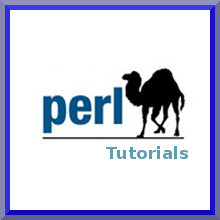PERL Tutorials
Installing a Perl Script Tutorial
This tutorial will show you how to install a simple Perl script and how you can use it on your website. To learn more on how to get a Perl script installed and running, you can use the sample simple script in the tutorial. Upon running it, it will produce a website with some simple text on it.
Perl Variables Tutorial
This is a tutorial that will teach you how to declare variables in Perl. It will also tell you how to use them in your scripts. Using a variable is not as bad as you might think. It is easy as 1,2,3 too and you just have to define the variable and then use it. 
Print Output Tutorial
This tutorial will show you how to print output to your website with the print statement. Here, you will find a simple Perl script which simply writes output to your web browser. To fully understand how it is done, you need to look at a few stuff involved in printing output to your web browser.
Perl Operators Tutorial
This tutorial will show you how to use Perl operators. Operators are used for math operations, assignments, and incrementing. There are a handful of versions of the operators for strings and numbers. For example: If you need to compare a number, you just need to use a traditional symbol like the “<“,” >”, and so on. However, upon comparing these two strings, the less-than or the greater-than signs are not used, for a special version is used to compare the strings.
Using Arrays Tutorial
This is a tutorial that will show you how to use arrays in PERL. This come in handy when you need to store a group of similar variables. By the way, an array is a way to keep values under one name. These values have something in common, and storing them in a group makes the them easier to access and manipulate.
Reading From Files Tutorial
This tutorial will show you how to read data in PERL from a flat text file and how to use it. The first step is to make a file so you will have something to read.
Appending Files Tutorial
This is a tutorial about adding data to the end of a file in PERL. Appending a file in PERL requires you to add an extra line at the end of the file. This comes inhandy if you want to add more information about the file and you do not want to delete other information in it.
Writing to Files Tutorial
This tutorial will show you how to overwrite or write contents into a file with new information. It also includes file deletion or file writing to a file which erases everything that was in there previously and writes new information over it.
File Checking Tutorial
This tutorial will show you how to check for files in PERL and its existence. There are various short expressions in Perl that you can use to test files, and reading this article will teach you also on how to properly use them.
Reading Directories Tutorial
This tutorial will show you how to read directories in PERL. Opening a directory is as simple as opening a file. The main difference is that you will need to follow its server path to get to where you want it to be.


Comments - No Responses to “PERL Tutorials”
Sorry but comments are closed at this time.